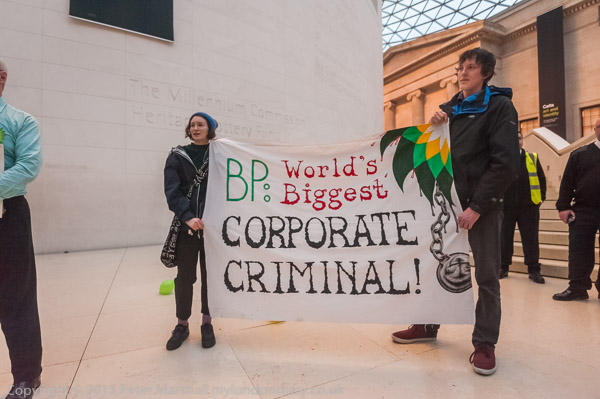
When I was young there were still many reminders of the First World War, though probably most still called it the Great War, or the Kaiser’s War, which we have now in the middle of celebrating the 100th anniversary. My father joined up towards the end of it when he was 18, having been working in munitions previously, and went to France, but fortunately only came under fire on one occasion. He was in the Royal Flying Corps (though I don’t think he ever actually became airborne) which became the RAF, and the planes were generally flown from fields a little back from the front line, but at one time when the Germans were retreating they advanced too far, and a shell landed nearby while they were sitting at a table outside having breakfast. He kept hold of his plate and finished his porridge, though there were a few more shells close by him later in the day, and some vehicles were damaged.
He was fortunate, and seems to have enjoyed the life, particularly when he was largely left on his own to look after the stores when they moved to occupy Germany and many of the older airmen went home, while he was kept on until 1920. Late in his life he wrote down some pages about his life which I think went to a local history museum, though I have a copy which one day I’ll edit for the web.
But the Great War had a very direct effect on my life, though I was only born at the end of its successor. It decimated a generation of young men, with the result that I had a whole clutch of maiden aunts, who played a large part in my upbringing, particularly since my own mother often spent long periods in hospital, suffering relapses of the puerperal psychosis which had led to three years in hospital following the birth of her first child (I was her fourth and last.)
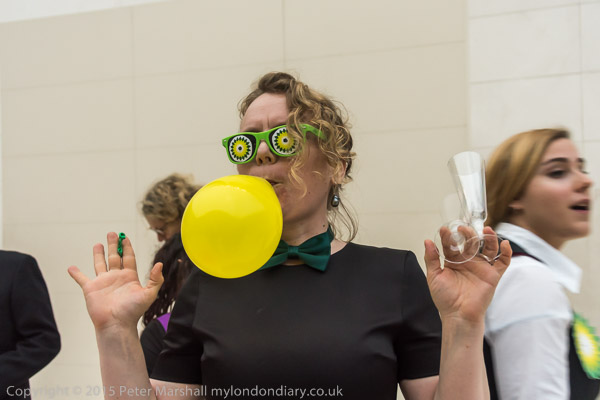
My favourite aunt was ‘Flo’ or ‘Aunt Florry’, one of my father’s five sisters, only two of whom married. She worked in the local registrar’s office, and had actually registered my own birth in her position as temporary interim registrar, but more importantly would take time off from work to take me and my elder brother and sister on days out during our school holidays. Almost always we would go on the tube – a great treat it itself – up to South Ken or Holborn for the museums and we would spend the day there.
Museums then were far more serious places than now, with few or any of the special displays that now take pride of place, and very little attempt to be child-friendly, though there were a few exhibits at some with handles you could turn or buttons you could press. But there were the actual things, often in glass cases, with typed labels that sometimes took a lot of reading. My favourite was of course the Science Museum, but others had their fascination.
I think then that the museums all charged for entrance, although some may have had free days, but most of their income will have come from the taxes that we paid to the government. Back in those days I don’t think my father earned enough to have to pay income tax, and before we joined the Common Market we had purchase tax, which had different rates but was only levied on ‘luxury’ goods – and so we will have contributed little.
Nowadays we all, even the poorest pay VAT on most goods and anyone in full-time work will earn enough to pay income tax. Before the war only around a quarter of families paid income tax, though that fraction increased rapidly in post-war years.
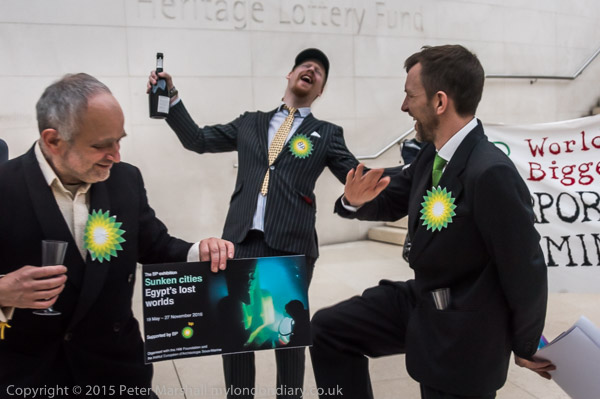
And museums have changed dramatically, losing what was essentially their didactic and educational aspect and instead aiming to entertain visitors. Many of the exhibits that used to fill cases are now locked away in back rooms and storage, replaces by colourful display graphics, screens designed to titillate, sounds and more. Of course they are still educational but in a different way, and seemingly made for people with a very limited attention span.
And for many museums and galleries now the main attraction is not their permanent collections, fine though these may be, but in expensively mounted special exhibitions, sometimes bringing together artefacts from other collections around the world.
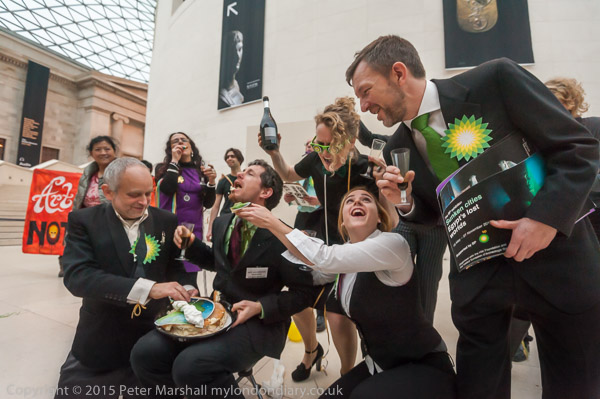
These things of course cost money. And more money than the government makes available, so museum often turn to sponsorship. Of course I’ve nothing against companies working together with museums, donating relevant examples of material or equipment, supplying information and expertise. If a museum wants to put on a display about – for example – cane sugar – Tate & Lyle would be an obvious company to assist them, and if they want to put on something about environmental pollution, then BP with their huge experience in the field, including Deepwater Horizon, would have a great deal to offer.
But of course that isn’t what BP’s sponsorship of museums like the British Museum and the arts is about. It’s about hiding the facts about one of the world’s worst polluters behind a facade of promoting the arts and the world heritage their activities are actually helping to destroy through exhibitions such as ‘Indigenous Australia: Enduring Civilisation‘, the ‘Mexican Day of the Dead‘ and ‘Sunken Cities‘. As BP or Not BP put it in their unannounced performance inside the British Museum, thes shows give BP “cheap branding and a social license to operate through all the oil spills“. What the protesters call ‘Greenwashing‘.
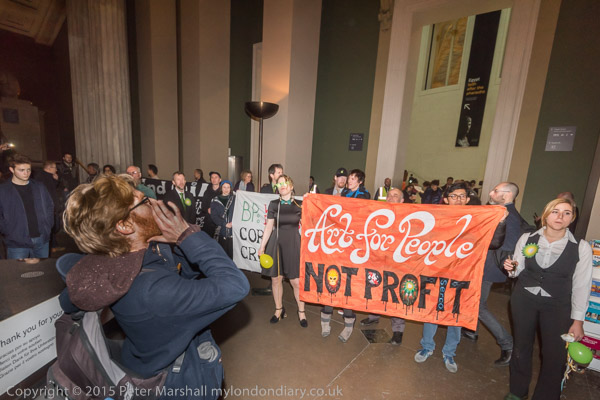
You can read more about the protest performance in http://mylondondiary.co.uk/2015/12/dec.htm#bp End BP’s British Museum Greenwash and of course see my pictures – or some of them – from the event. Unusually I was commissioned by them to photograph the event, which in some ways made it easier and in others a little more stressful. It meant I knew what the performers were going to try and do because I’d watched them rehearse for several hours before the event, but I – and they – had no idea how the museum security staff would react. And on this occasion, like the performers, I had plenty of time beforehand to worry about it.
It didn’t quite happen as expected, with a little forgetting of lines and actions, but the performance went remarkably well, and the security who were informed at the start that it would be short and people would leave without any trouble at the end didn’t create any real problems either for the performers or for me and two other freelance photographers who I knew who turned up to take pictures – having, doubtless like the security read the rather sparse details published on Facebook.
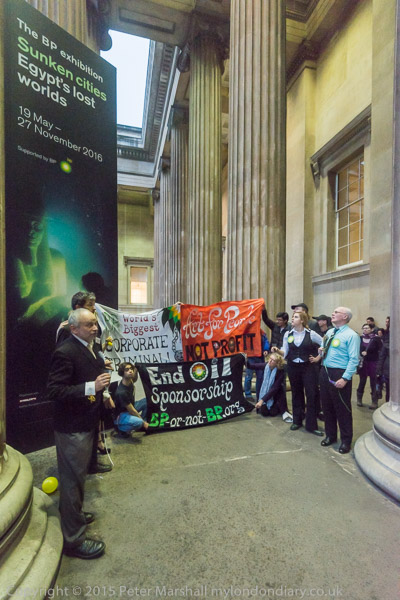
I supplied a set of the best images to the clients for their use, and the images on My London Diary with a couple of exceptions are alternative frames – I took a few more exposures than usual with this in mind. The differences are often rather small – often just a slightly different expression or gesture.
As usual I used the D700 with the 16-35mm lens and the D810 in DX mode with the 28-200 (42-300 equiv). Before the performance began I took a few pictures in the Great Hall and decided I could work there without flash at EI 1200, which would give me a shutter speed of 1/125 at an aperture around f4-5.6. The speed was just fast enough to stop most movement and with the wide-angle even working wide open at f4 would give sufficient depth of field for most pictures. Looking back I might have used a higher ISO to give a slightly faster speed, but wanted to avoid extra noise.
I’d decided not to use flash during the main performance in the hall, partly so as not to attract too much attention from security. I certainly did not want to be told by museum staff I could not take pictures, though I would have been prepared to try and ignore their requests citing the public interest.
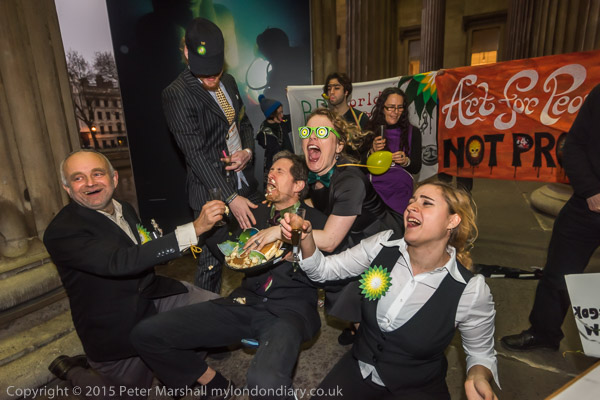
When the protesters moved into the darker foyer I need flash, and again when they moved outside to the portico there was relatively little light. I kept on working with flash on the D810, but flash on the D700 is now unpredictable – the camera needs a full overhaul, but given its exposure count I think the expense isn’t sensible – better buy a new camera. And I have one on order now, waiting for when Nikon production gets back to normal.
Quite a few of the images taken without flash outside were a little too blurred and I should have should have increased the sensitivity; although the shutter speeds were not particularly slow, I was often rather close to the subjects, where a faster speed is needed to stop movement, and I think the performers were perhaps a little less inhibited.
I think we should support museums, but that they should operate without sponsorship from questionable commercial enterprises. Perhaps protesters might continue the campaign by printing and handing out notes to put in the boxes in the entrances to our splendidly free museums soliciting contributions with a message along the lines “I am not making a contribution as you accept sponsorship from BP, the worlds biggest corporate criminal. If you were not taking their money I would have given you …” and a series of boxes where you could tick to show what you might otherwise have been donated. The amounts from sponsorship are relatively small prepared and might well be replaced by contributions from visitors.
Or perhaps museums and galleries should be happy with a lower profile without the special sponsored shows. In the National Gallery which I often visit when I’ve a little time to spare in the centre of London, it’s often difficult to see the pictures for the crowds, especially around popular works. I’m certainly no fan of the expensive block-buster shows which most big galleries seem to put on now, and much more inclined to revisit the works that they keep for me on their walls. I wouldn’t actually want to own Cezanne’s Bathers, Van Gogh’s Sunflowers, Turner’s Fighting Temeraire or most of the other great paintings in the National Gallery (there are a few small works I could fit in if they were going spare), but it’s great to be able to pop in from time to time and look at them on the walls.
______________________________________________________
There are no adverts on this site and it receives no sponsorship, and I like to keep it that way. But it does take a considerable amount of my time and thought, and if you enjoy reading it, the occasional small donation – perhaps the cost of a beer – would be appreciated.
My London Diary : Buildings of London : River Lea/Lee Valley : London’s Industrial Heritage
All photographs on this and my other sites, unless otherwise stated, are taken by and copyright of Peter Marshall, and are available for reproduction or can be bought as prints.
To order prints or reproduce images
________________________________________________________
The Tate & Lyle trap.
Even the stock market marked down the shares when the sugar tax was proposed then they remembered -In July 2010 the company announced the sale of its sugar refining business, including rights to use the Tate & Lyle brand name and Lyle’s Golden Syrup, to American Sugar Refining for £211 million.
Oh yes. Britain’s oldest brand sold off, is nothing sacred?
You get a good view of the giant tin on the building from the DLR – at least it was still there last time I went past a few months back, though there is a lot of redevelopment around there at the moment. Here it is from 2013:
http://mylondondiary.co.uk/2013/06/jun26-04.htm